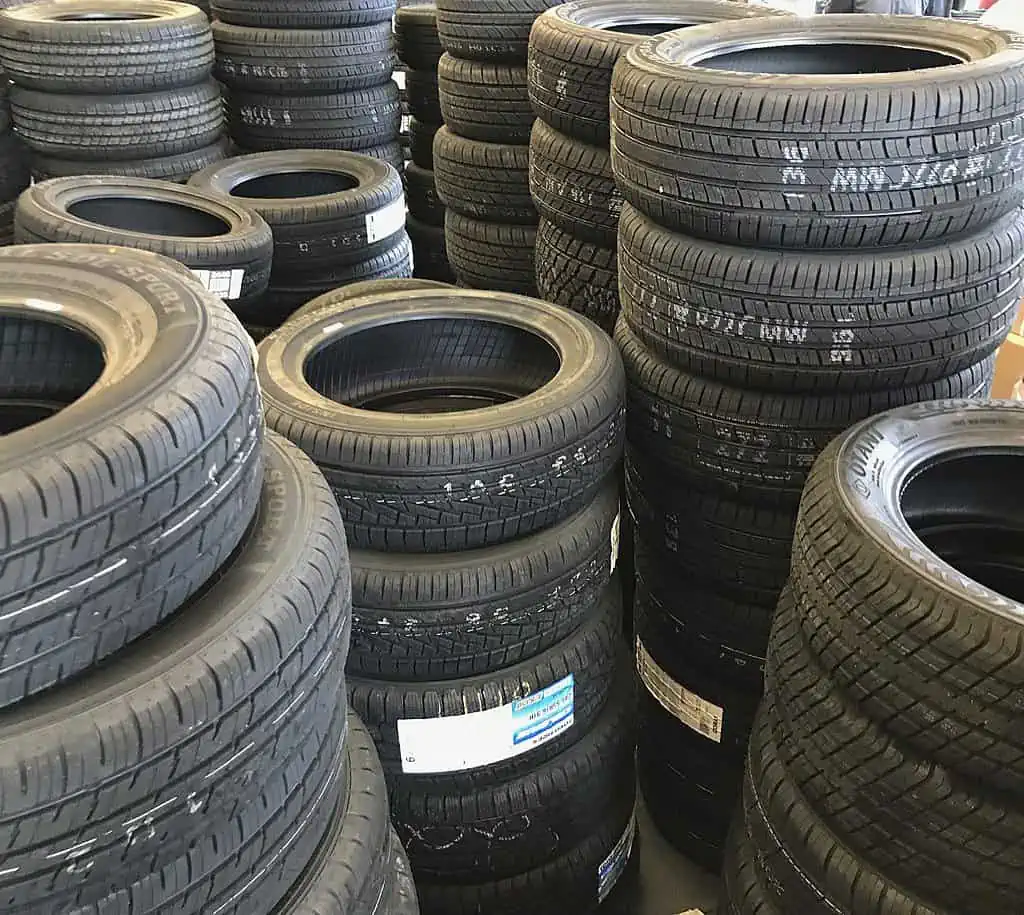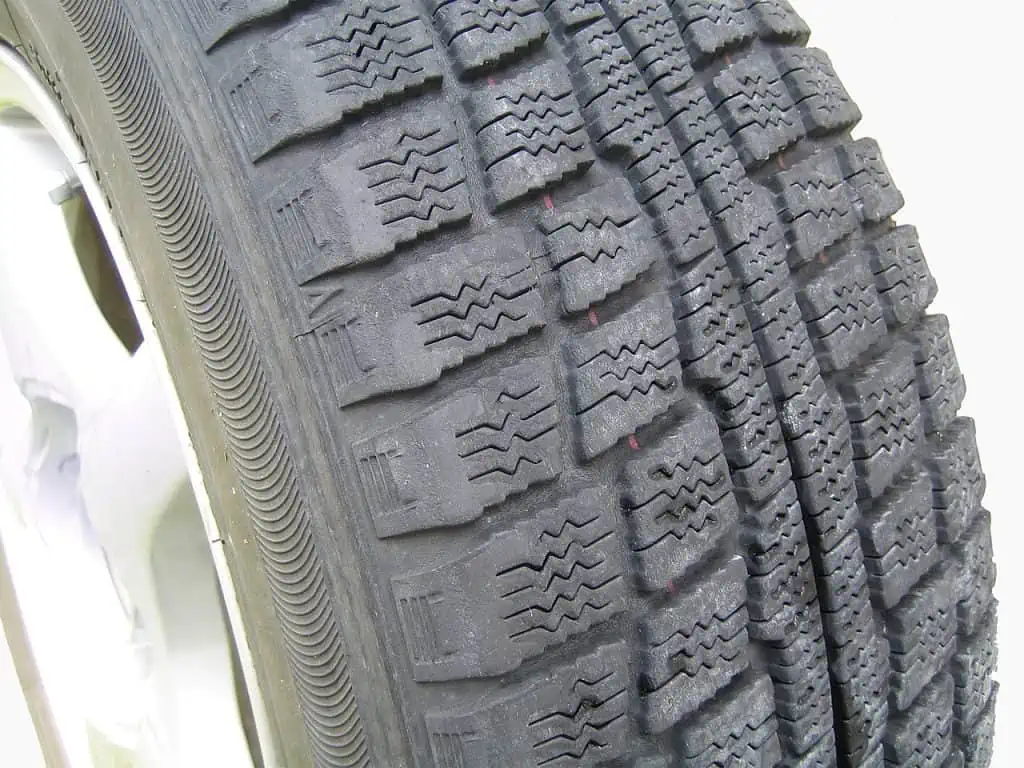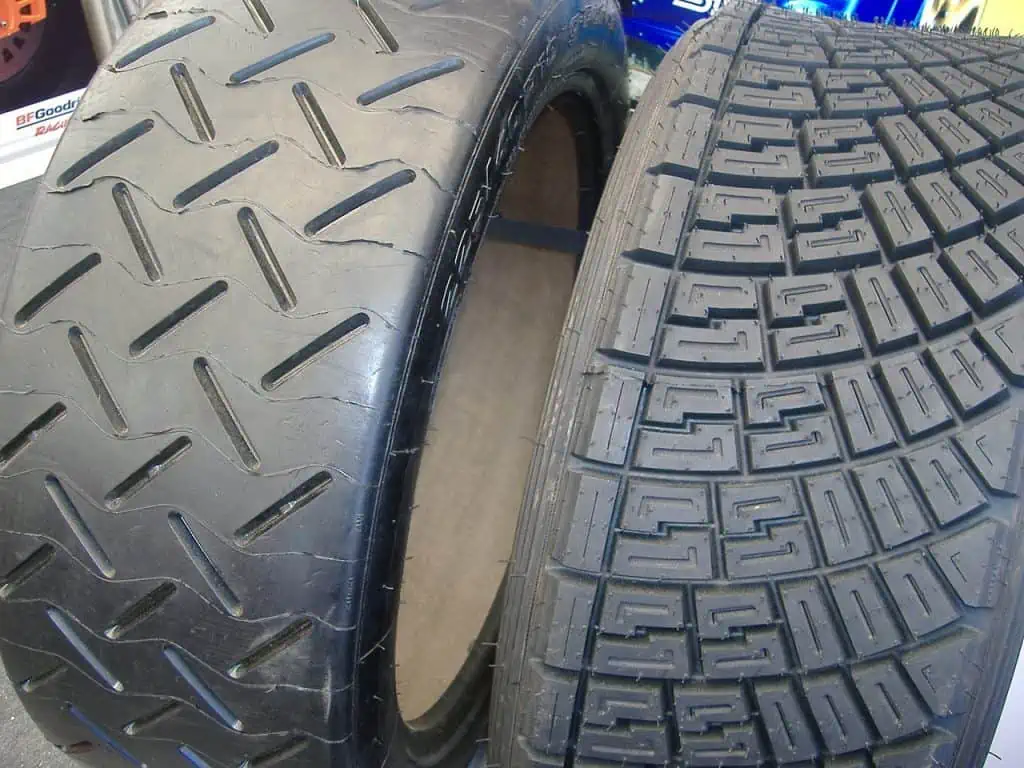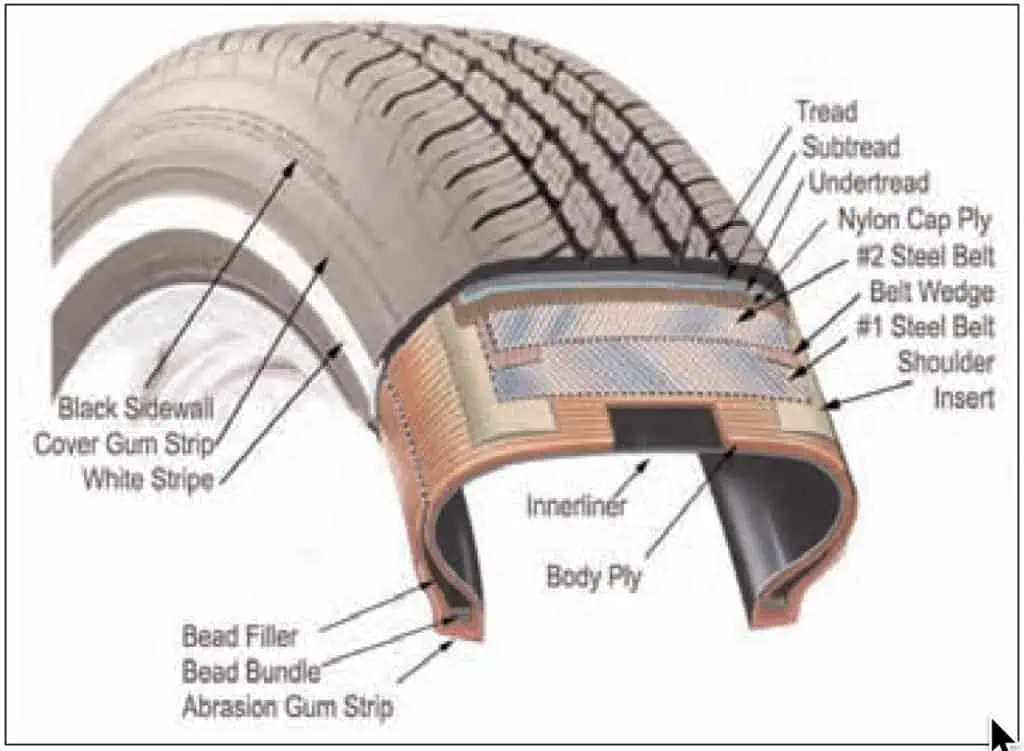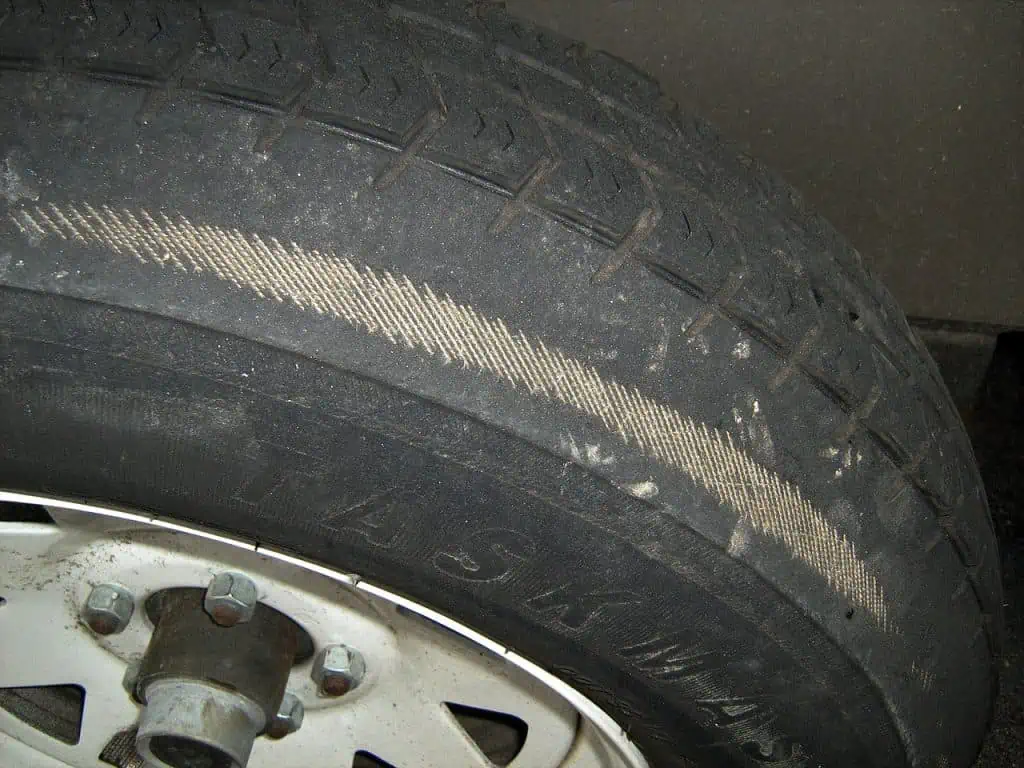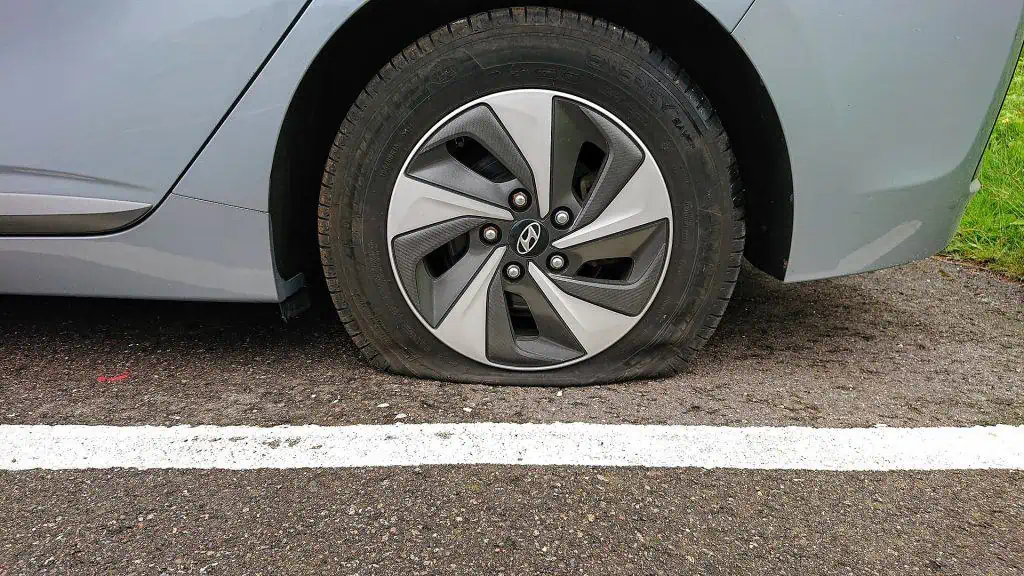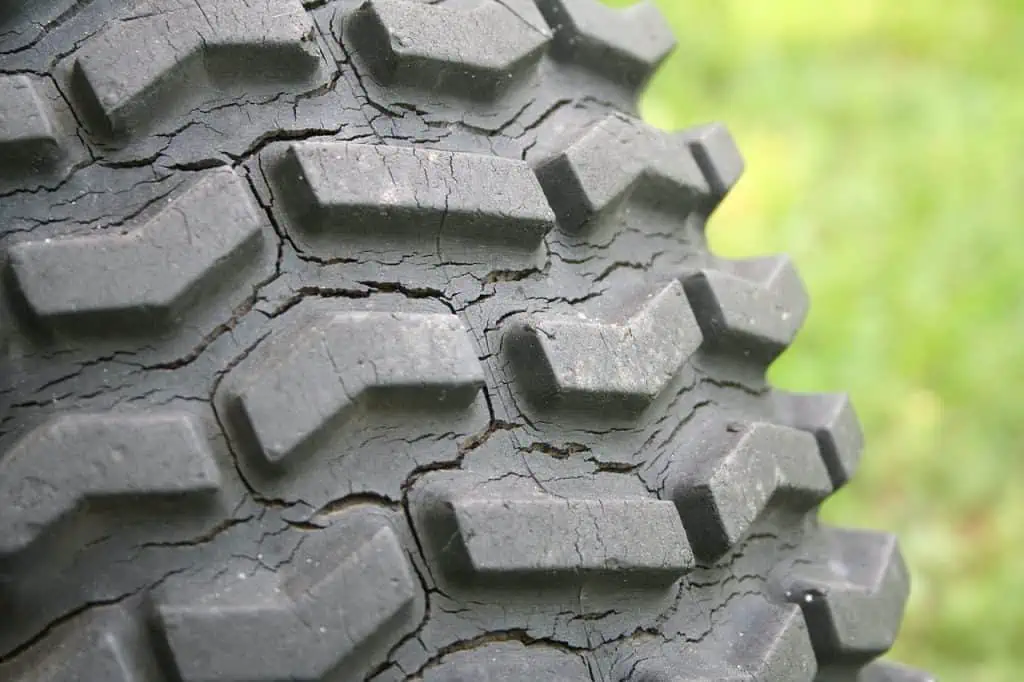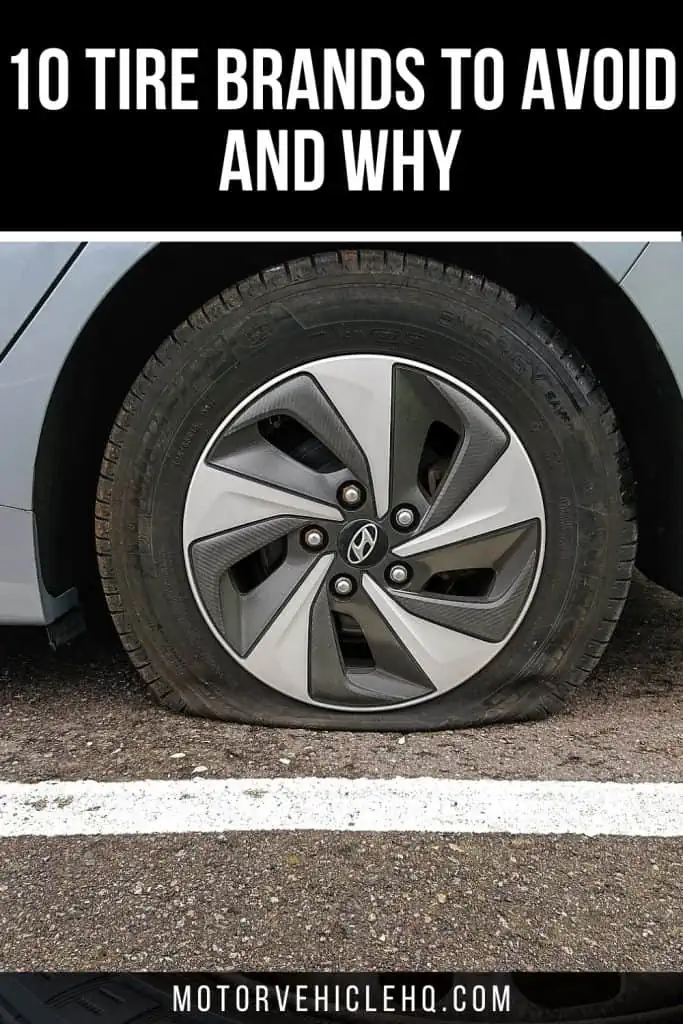The tire is undoubtedly one of a car’s most crucial components. You would still rely on that little bit of rubber around your rims whether you had 50 horsepower or 500.
The tires have a crucial job to do, and they must be good to do it well: cornering, stopping, maintaining you in a straight line, and accelerating. To be more precise, I mean that you must perform excellently to be able to drive safely.
If you’ve read any of the evaluations on this list before, you might have noticed that I hardly ever bring up unsafe tires.
Even while some might not function as well as I would want, I would still mark them as generally safe. The reason for this is that all of the tires I evaluate are produced by well-known companies.
While some are more affordable than others, all are made by companies with a track record of providing high-quality tires. Check out the list of the top tire manufacturers that we just discussed.
There are now three different tire kinds available, and they are categorized according to performance and cost. There are three price ranges: premium, midrange, and budget.
The lines between them aren’t always entirely apparent as tires develop and manufacturers adopt newer technologies. A premium tire might occasionally perform like a mid-range tire, and vice versa.
Let me first explain why before I start listing the tire brands you should stay away from.
What Distinguishes the Tire Brands to Avoid?
I could probably talk about this for days, so I’ll try to keep this brief.
Here’s an illustration of why a lousy tire isn’t always the cheapest. Winter tires on my 30-year-old Corolla are Tigars, which are priced reasonably.
Assorted new automotive road tires by HopsonRoad (Stephen Flanders) / CC BY-SA 4.0. Unquestionably, one of a car’s most important parts is the tire. Regardless of whether you had 50 or 500 horsepower, you would still depend on that small amount of rubber surrounding your rims.
Listen to me out before you brand me a hypocrite. The automobile came with 70 horsepower out of the box. I’m estimating that twenty of them passed away in the last thirty years, leaving me with an automobile that isn’t very powerful.
I mostly use it for local transportation, so investing in something like a Michelin Alpine would be wasteful. The ones I currently have are taking care of me and protecting me, which is what I need from them.
People frequently claim that the cheapest tires are the worst, which is why I felt compelled to share this story. Even while that is accurate, the ones I have on my car say that the statement is wrong, therefore it’s only partially true.
A defective tire is made from the factory. You don’t only pay a premium price for the performance when you do.
You also pay for the tire manufacturer’s research and development efforts as well as any other costs associated with manufacturing. Cheaper brands are less expensive since they make fewer investments.
When there hasn’t been much research and development, the tire won’t be rigorously tested before going through the lengthy production process. The result is a tire with an unproven tread pattern and compound.
The tread design is another crucial component. Two tires may appear to be the same when compared. They are not, as you will discover upon closer investigation, and these seemingly insignificant variations can make a tire perform well or poorly.
Durability comes last but not least. The majority of the tires I review here are really strong tires. While they might wear out more quickly than others, the inside structure is made to prevent the tire from tearing itself apart. I can assure you that it is not enjoyable to have a tire explode when traveling at 70 mph on the highway.
In conclusion, a poor tire was not properly designed and did not pass rigorous safety inspections before being supplied.
Why Should You Be Aware of the Tire Brands to Avoid?
Technically, I’ve previously explained why, but let me go into more depth.
I would love to dance with a car on a winding road, but only if the tire could carry out its intended function. You will need to rely on the tire’s traction when entering a corner at a higher speed to stay on the road.
A tire with poor aquaplaning resistance can quickly spin you out of control in the rain. You have a recipe for disaster when you add in the lengthy braking distances.
Even routine driving can be problematic if the tires are in poor condition. The majority of us like to call these “plastic tires.” For a regular commute to work, the rubber compound is unable to offer sufficient traction or grip.
This often indicates that the tire will understeer or slip when accelerating. In essence, it resembles a flat tire but is brand new.
How excellent or awful a tire also heavily depends on how durable it is. Depending on the type of tire, a durable tire should endure 40,000–50,000 miles, with some even exceeding the 6-digit mark. Internal construction is the next factor.
A winter tire without studs, showing a tread pattern designed to compact snow in the gaps by Lombroso. The tires must be good to execute their important duty, which includes cornering, stopping, keeping you in a straight line, and accelerating. To be more specific, I mean to be able to drive safely.
Any tire from a trusted manufacturer will be made to withstand the daily wear that our tires endure. They are kept from blowing up while you’re driving by using steel belts, nylon wrapping, and a ton of other methods.
The warranty is the final component of the jigsaw. Although not all tires I’ve assessed in the past have a warranty covering treadwear, there is at least a warranty covering workmanship or uniformity.
None of it is offered by the lowest and worse tire brands on the market. In other words, you’re stuck because you can’t get a replacement if your tire deforms and becomes unstable.
The Tiers of Tire Makers: All You Need to Know
You must first understand the various levels of tire makers to comprehend the worst tires and worst tire companies.
Tiers exist within the tire sector. indicating that various tire levels and brands cater to various customer bases. Although there are many brands on the market, being able to distinguish between them can give you an advantage when deciding which tires are best for your budget.
These precise tiers, as well as each of its representatives, will be covered in detail in the next few chapters, along with a summary of each one’s key traits.
Premium Tires – Tier 1
Premium tires are frequently referred to as Tier 1 tires. These tires receive the most marketing support and financial support for the creation of novel compounds and materials that can be used to enhance the tire’s driving qualities.
Therefore, there are probably not any particularly bad tire companies. The best ones are those. Which manufacturers fall under the category of Tier 1? There is a handful of them, I suppose. Specifically, Continental, Goodyear, Bridgestone, and Michelin.
These tire manufacturers aim at high-end customers and users. People don’t care about money or how expensive tires are when they want to get them.
Type II Tires – Tier 2
Tier 2 tire manufacturers are not too far behind tier one tire manufacturers. Additionally, they are not among the worst tire manufacturers out there. That much is true.
These are the tire companies that also make significant financial investments in marketing and research and development ( r&d). Their tires differ from premium tier 1 brands in that they are valued a little lower.
Brands like Dunlop, Yokohama, Toyo, BFGoodrich, Pirelli, Hankook, and Firestone are examples of Tier 2 tire manufacturers.
When you still have some cash to spare for a set of tires, these are the brands you should consider. However, the premium tires still seem to be pretty pricey. Luckily for you though.
If you want to save money without buying the worst tire brands, the tier 3 brands are possibly also quite an attractive market.
Type III Tires -Tier 3
The third-tier tire brands are not the absolute worst. These tires provide excellent value for the price that you pay. the moment you purchase one of these tires. Get the most value for your money.
High-performance rally tires by Jorjum. Any tire developed by a reputable company will be built to resist the regular wear that our tires experience. Steel belts, nylon wrapping, and a variety of other techniques are used to prevent them from blowing up while you are driving.
These tires are cost-effective performers with good performance. To offer these tires for this price range, some further compromises had to be made.
But if you want to save money and still be able to run fresh tires on your car, you’ll have to put up with it. What are these brands, then?
These brands are typically tired premium brand sub-brands. the following companies: Uniroyal, General Tire, Kumho, Nokian, Nexen, and Cooper Tires. What are the poorest tire manufacturers? That’s what we’ll discover in the ensuing chapters, I suppose.
Type IV Tires – Tier 4
All other tire brands are included in the last tier of tires. The lowest brands out there are, specifically, Kelly Tires, Kenda, Nankang, Alliance, and other low-quality names. Nevertheless, these automakers produce some high-quality tires.
Who makes the worst tire brands, though? In the subsequent chapter, we will discuss this topic and learn more about the tire brands that are generally considered to be the worst.
Which are the Tire Brands to Avoid Buying?
The section you’ve all been waiting for is finally here. The big unveiling of tire brands to avoid. These are a few of them:
- The Chaoyang tires
- The Geostar tires
- The Triangle tires
- The Goodride tires
- The Westlake tires
- The Accelera tires
- The AKS Tires tires
- The Compass tires
- The Telluride tires
- The Unicorn tires
There is a widespread assumption that Chinese tires are the worst, however, this is not entirely accurate. Consider the Indonesian company Accelera, which continues to produce subpar tires.
It’s also important to note that these are not the only companies that make subpar tires. There are many more, but the ten I’ve listed here are some of the worst.
1. The Chaoyang Tires
Surprisingly, Chaoyang has been in business for a lot longer than you may expect. In 1958, the business was established in Hangzhou, China.
The company has steadily expanded its selection over the years to include tires for various vehicles and equipment, including forklifts, cars, and bicycles. The business is a part of the Zhongce Rubber Group, which also controls some further tire companies on this list.
This company’s interesting feature is that it has a positive side that is regarded as well. Bicycle tires were the company’s main focus in the past, and some people think they are good.
Components of a radial tire by HopsonRoad. The term “Tier 1 tires” is widely used to describe high-end tires. The development of novel compounds and materials that can be utilized to improve the driving characteristics of the tire is supported financially and in terms of marketing the most for these tires.
The fact that Chaoyang only recently started producing vehicle tires, in my opinion, explains why they perform so poorly in comparison to other brands.
2. The Geostar Tires
I might face some criticism for mentioning this brand but bear with me. Nankang owns the Geostar brand, thus for some people, that can be sufficient evidence of their quality. Actually, no.
Fair enough, Nankang isn’t a company that produces exceptional tires; but, it does it at a reasonable price. A similar philosophy is used by the brand Geostar, which produces inexpensive tires with subpar performance.
I wouldn’t consider the outcome of adding a less expensive choice to an already inexpensive tire to be safe. If you take care, dry performance might be acceptable, but anything above that is risky and should be avoided.
3. The Triangle Tires
Triangle has been in business since 1976 and is a significantly more recent tire manufacturer. The business was founded in Weihai, China, and first made sweeper automobile tires for the Indonesian market.
Triangle gradually transitioned to manufacturing vehicle tires as the demand for automobiles in China grew. The business underwent numerous modifications up until the 2000s when it began to take the situation more seriously to provide better tires.
Triangle and the University of Akron entered into a relationship in 2011 to advance the business research and development division.
On paper, the company appears to have a lot of potentials, provided that the R&D division executes its job well and begins making high-quality tires. Wet conditions are currently the primary issue most tires encounter. There is hardly any traction, according to many people, for safe driving.
4. The Goodride Tires
Goodride is a different tire brand that belongs to the Zhongce Rubber Group. This brand, which has been around since 1997, is one of the more recent ones on this list.
The company offers a wide variety of products, from tires for passenger cars to those trucks and buses. Given the abundance of tires for trucks, buses, and other commercial vehicles as well as agricultural use, I would assume that the range is mostly targeted toward businesses.
Goodride tires are marketed as being affordable and competitively priced. Although I won’t go on a tirade about inexpensive tires, I still wouldn’t suggest buying these.
The tires don’t appear to have many serious durability issues, and consumers claim that the wear is fair. They also mention how much poorer the handling and traction are compared to comparable tires in the same price range.
5. The Westlake Tires
Westlake is the third tire brand from the Zhongce Rubber Group that I’ve listed. Only two years have passed since the release of Goodride, yet the plot—cheap tires, but with a twist—remains almost the same.
The tire shows uneven tread wear by CZmarlin. The least desirable tire brands are not always the third-tier ones. For the amount you pay, these tires offer fantastic value. as soon as you buy one of these tires. maximize the value of your investment.
This brand’s tires are marketed as secure tires for the neighborhood, which indicates that they are mostly for China. Despite this, you can still locate them elsewhere in the world.
The main issue with these tires is that they don’t undergo the same inspection procedures as tires made in Europe or America. Because of this, the business can reduce costs in some areas and offer them.
Surprisingly, several users have claimed that the majority of models are passable for slower speeds and can be driven around town. The tires are hazardous at higher speeds since you can’t feel the traction and are unsure of whether the tire will hold to the road when you turn.
6. The Accelerate Tires
We’re sort of leaving Chinese brands behind and getting to Accelera. The business, which markets itself as a brand that distributes high-performance tires, was established in Indonesia in 1996.
Since Accelera is a part of the Elangperdana Tyre Industry, which was established in the same year, it doesn’t have a long history of operation. Astonishingly, the manufacturer offers tires for racing, off-road, and even passenger cars.
The fact that there are rising tires from a firm that produces high-performance road tires with subpar performance is what surprises me.
The wet performance was where the tires struggled the most, similar to some of the other manufacturers on this list. Some owners claimed that to achieve a barely safe driving experience, they had to be extremely careful with the brake and throttle pedals.
7. The AKS Tires
This brand is peculiar, which further strengthens my belief that its tires ought to be avoided at all costs. To begin with, there is no information regarding the tire manufacturer.
You can find some information about the dealerships that sell them, but nothing about ownership, corporate headquarters, or even previously employed technology or features. This seems like a company that manufactures tires in a basement, in my opinion.
These perform the poorest in terms of quality. The grip and traction levels are so poor, even in ideal driving circumstances, that you almost think they’re made of plastic. Performance suffers significantly under less optimal circumstances.
8. The Compass Tires
Compass reminds me of Chaoyang in certain aspects. The business offers both passenger and bicycle tires for sale. Additionally, the business offers a variety of brand-name auto parts for sale.
It appears to be a wholesale with a tire factory, in my opinion. Since entering the market in 1998, the company hasn’t demonstrated any signs of improvement.
Given their placement on this list, the performance of these tires is as expected. The longevity and comfort aren’t the worst, but you won’t want to experience the performance.
9. The Sunfull Tires
A US company called Unicorn Tire Corporation owns the Sunfull tire brand. Yes, you read that right; the tires are produced in China by a US brand.
As a result, you’d anticipate having something valuable to give, especially because a lot of items created in China aren’t horrible. But, sadly, it’s not the case.
Flat tire on a Hyundai car by Stian Martinsen / CC BY-SA 4.0. The final layer of tires consists of all other tire manufacturers. The worst names on the market are names like Kelly Tires, Kenda, Nankang, Alliance, and other knockoffs. However, these automakers manufacture certain premium tires.
The business, which was founded in 2007, has two issues. The first is that there aren’t many models available, and with so few choices, it can’t provide anything.
Performance, or lack thereof, is the second issue. Most of the time, the tire’s wet performance is its poorest, and its stopping distances are among the longest I’ve ever observed.
10. The Trazano Tires
Trazano is the final tire brand on this list that is a part of the Zhongce Rubber Group. It’s a US-based brand established in 2009, therefore similar to the last one, it’s still a modest player in this sector.
The most intriguing aspect is that there isn’t even a website where you can view the available models. You will need to rely on the information provided by the resellers instead. Although the firm markets the tires as trustworthy and safe, they are far from it.
The majority of the tires’ performance isn’t the worst in the world, but you’d still be getting a lot less than with models of a comparable price from a respected manufacturer.
You will notice an even bigger issue as the tire ages: uneven wear. When compared to the sides, the middle of the tire will have significantly less tread.
Which Tires Should I Buy Instead?
We discussed the poor tire manufacturers. Let’s find out which tires to buy now. What are the top tire companies that offer high-quality tires at reasonable prices?
If you need tires but are on a tight budget. You should concentrate on the brands on our list of tiers 3 and 4. Tier 3 brands are superior and capable of providing exceptional performance. even though you pay less. Tier 4 brands are marginally inferior to Tier 3 brands. Still, it’s not all that horrible.
When it comes to tire brands that offer good value, General Tire, Kumho, or Uniroyal are perhaps our favorites. Particularly Uniroyal is adept at supplying the industry with top-notch tires. Specifically, their Tiger Paw model, which is among the best in the wet.
Moreover, Nexen produces excellent tires. The Roadian GTX, in particular, is a fantastic all-season tire that will serve you incredibly well. They have received several compliments on Amazon for their silence as well as their excellent grip in the rain and snow.
The Nokian ZLINE A/S Performance Radial Tire is one of our other favorites. These tires are among the best summer tires available and offer great performance for a reasonable cost.
How Can I Tell If a Tire Is Defective?
The most obvious solution is to read a review, however, there can be a problem with that. There are very few odds that you will discover a review of these tires on an established website.
On the website that sells them, you can typically discover some information about them along with glowing reviews of how great they are. Those should be treated with caution.
The following piece will only apply to you because, technically, you won’t be able to tell whether a tire is bad or not.
How Do I Select a Quality Tire?
Since the concept of a good tire is so broad, I’ll attempt to provide two different viewpoints.
1. The Performance
I adore getting in the driver’s seat and racing around a circuit. For these uses, a performance-focused tire is the best option. You won’t be making a mistake if you choose one of the outstanding high-performance tires available in the premium or mid-range divisions.
One thing to keep in mind is that you won’t be receiving the same amount of traction and grip. You can either try it out for yourself or check to see whether we’ve reviewed the tire.
Tire showing weather-cracking over long-term exposure to the weather by Griffinstorm / CC BY-SA 4.0. The durability of a tire has a significant impact on how good or bad it is. A robust tire should last 40,000–50,000 miles, with some even going over the 6-digit threshold, depending on the type of tire. The following factor is internal construction.
2. The Safety
Your top priority will be your safety if your daily driver is a car that won’t perform well on a racetrack. In this situation, I wouldn’t suggest choosing the priciest options, especially if your automobile is older. To be clear, I’m not claiming the performance ones are subpar; nonetheless, the cost will be more.
The main problem, just like with my winter tires, is that you won’t be utilizing the tire to its best capability. I avoided the risky route and saved money by not purchasing a costly pair of tires.
In this instance, even if you choose the less expensive options, as long as the manufacturer has a track record of producing high-quality tires, there shouldn’t be any problems.
Although traction and grip are significant, I believe that the braking distances are the most crucial factor. With more costly tires, you will have shorter stopping distances, but that does not mean that the cheaper ones will have ten times longer stopping distances.
The main objective is to maintain low and safe stopping distances despite the larger distances.
3. The Brand
This may come down to personal preference for some people, while it might not matter to others. I’ve previously used daily drivers from Hankook, Falken, Continental, Firestone, and other manufacturers. To have a tire that can function well is what I desire.
In this case, I suggest focusing on the individual model rather than the brand. I’ve seen tires in the midrange with braking distances comparable to some high-end tires. I was taken aback by the quiet ride of some mid-range tires and the harsh ride of premium tires.
The type of tire you are using—summer, winter, all-season, touring, high-performance, etc.—should ultimately be a consideration. There isn’t a tire that will work flawlessly in all circumstances, so choose per your requirements.
The Conclusion
The worst tire brands have been extensively discussed in this article. First, we gained a better understanding of tires in general and what factors are important to consider when buying new tires.
These are the performances in both wet and dry, as we have taught. Additionally, comfort and other minor factors are important when buying new tires.
The top and worst tire brands were then revealed, along with information on all four tiers of tire manufacturers.
The advantages of using these tires were then explained, along with what tires to buy in their place. To have the best of all worlds, choosing value tires is your best bet. Price and quality-wise.
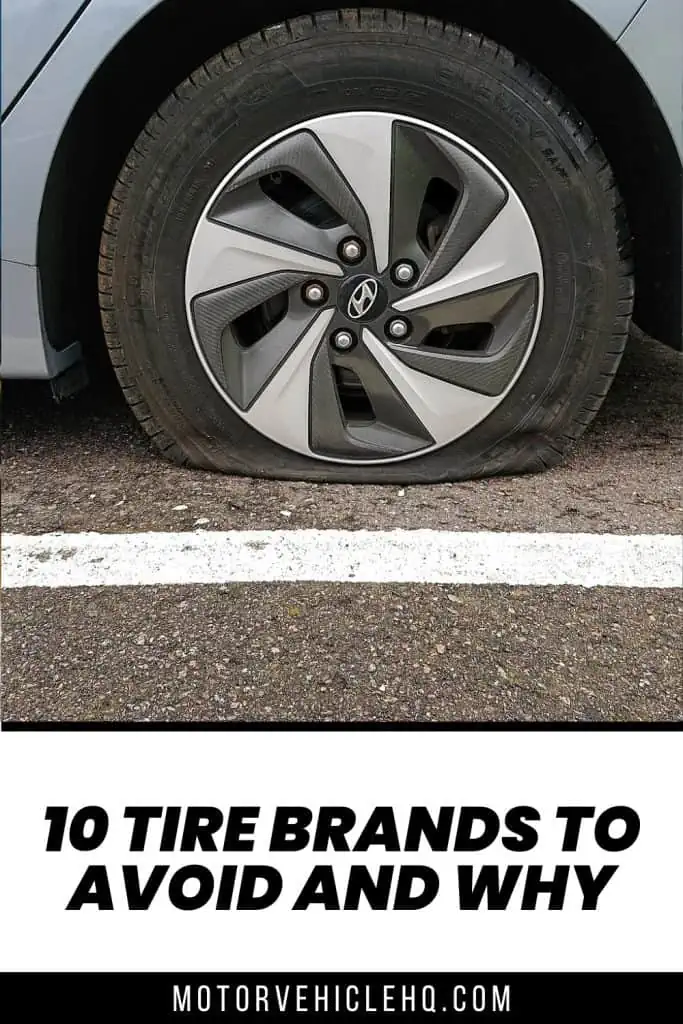
Flat tire on a Hyundai car by Stian Martinsen / CC BY-SA 4.0

Jim Wicks is the founder of MotorVehicleHQ. With over two decades of experience in the automotive industry and a degree in Automotive Technology, Jim is a certified car expert who has worked in various roles ranging from a mechanic, car dealership manager, to a racing car driver. He has owned more than 20 cars over the past 15 years. Ask him about any vehicle you see on the road and he can tell you the make, model and year. He loves the aesthetics of all things cars, and keeps his vehicles in pristine condition.
In his free time, Jim enjoys getting his hands dirty under the hood of a classic car or taking long drives along the country roads. His favorite car? A 1967 Shelby GT500, a true classic that, according to Jim, “represents the pure essence of American muscle.”
